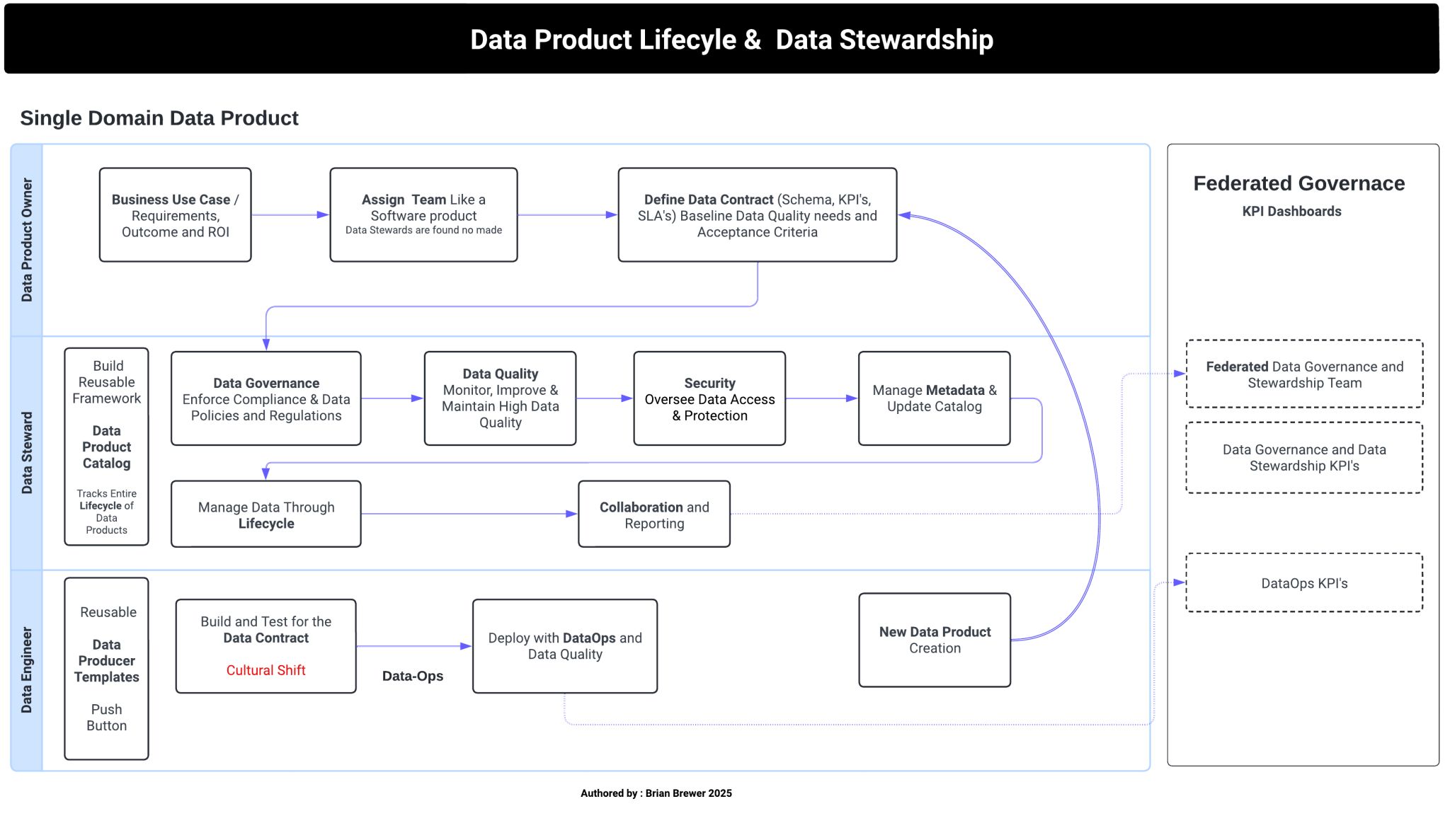
The Data Product Lifecycle
As of 08:03 PM EDT on Thursday, July 17, 2025
The buzz around data products is reshaping how organizations leverage data. For VPs of Data and CTOs, understanding this concept is key to driving strategic value. This article breaks down the definition, explains the accompanying diagram, explores implementation architectures, and discusses the role of open-source frameworks in building robust data solutions.
What Are Data Products?
Data products are curated, reusable data assets—such as datasets, dashboards, or machine learning models—bundled with metadata (e.g., schema, lineage, service level agreements) to ensure they are discoverable, trustworthy, and aligned with business objectives. Stored in centralized catalogs, they’re accessible via self-service data marketplaces, enabling business users to discover and consume data without heavy IT reliance. This democratizes data access, boosts agility, and aligns with enterprise goals.
Understanding the Data Product Lifecycle
The data product lifecycle is a framework that guides the creation, management, and retirement of data products, treating data as a strategic asset akin to software. It consists of defining needs, building solutions, deploying them, and operating them over time. The diagram titled “Data Product Lifecycle & Data Stewardship” (authored by Brian Brewer, 2025) visually maps this journey, emphasizing collaboration between business owners, data producers, and governance teams.
Breaking Down the Lifecycle Framework
The diagram is divided into three key roles—Business Owner, Data Producer Engineer, and Federated Governance—each contributing to a single-domain data product. Here’s how it flows:
Business Owner: Begins with a use case, requirements, and ROI expectations, assigning a team to drive the process.
Define Data Contract: The team defines a data contract (e.g., schema, KPIs, SLAs), setting baseline quality needs and acceptance criteria to align producers and consumers.
Build Phase:
- Data Governance: Enforces compliance and policies.
- Monitor Quality: Maintains data integrity.
- Security & Access: Oversees protection measures.
- Manage Data Through Lifecycle: Tracks the entire process.
Deploy with DataOps & Data Quality: Deploys the product, leveraging DataOps for efficiency and quality checks.
Collaboration and Reporting: Facilitates teamwork and tracks performance.
Manage Metadata & Update Catalog: Keeps metadata current and accessible.
New Data Product Creation: Loops back to innovate or retire products.
Data Producer Engineer: Builds and tests against the data contract, using reusable templates and a “push button” for deployment, signaling a cultural shift toward automation.
Federated Governance: Oversees KPI dashboards, data governance, stewardship KPIs, and DataOps KPIs, ensuring a federated approach to accountability.
This circular flow underscores the iterative nature of the lifecycle, with governance and stewardship embedded at every stage to maintain trust and compliance.
The Role of Stewardship and Metadata
Stewardship ensures data quality, compliance, and collaboration throughout the lifecycle. Data stewards manage metadata—context like schemas, lineage, and SLAs—making data products discoverable and reliable. The diagram’s federated governance layer reflects a decentralized model where domain teams own their data products, supported by shared standards and KPI dashboards, balancing autonomy with enterprise-wide consistency.
Both architectural approaches emphasize metadata as the foundation for self-service access, with automated lineage tracking and quality metrics providing the transparency necessary for business user confidence.
Next Steps
- Assess current infrastructure.
- Plan architecture based on needs.
- Pilot a single-domain implementation.
- Establish federated governance.
- Iterate and scale.
About the Author
Brian Brewer, CTO of InfoLibrarian™, brings over 20 years of consulting experience, leading SMBs and enterprises to architectural success. His Metadata Value Method™ emerged from this journey, now driving the company’s modernization mission. Learn more about my journey in my story or our history on the company page to see how this transformation began.

